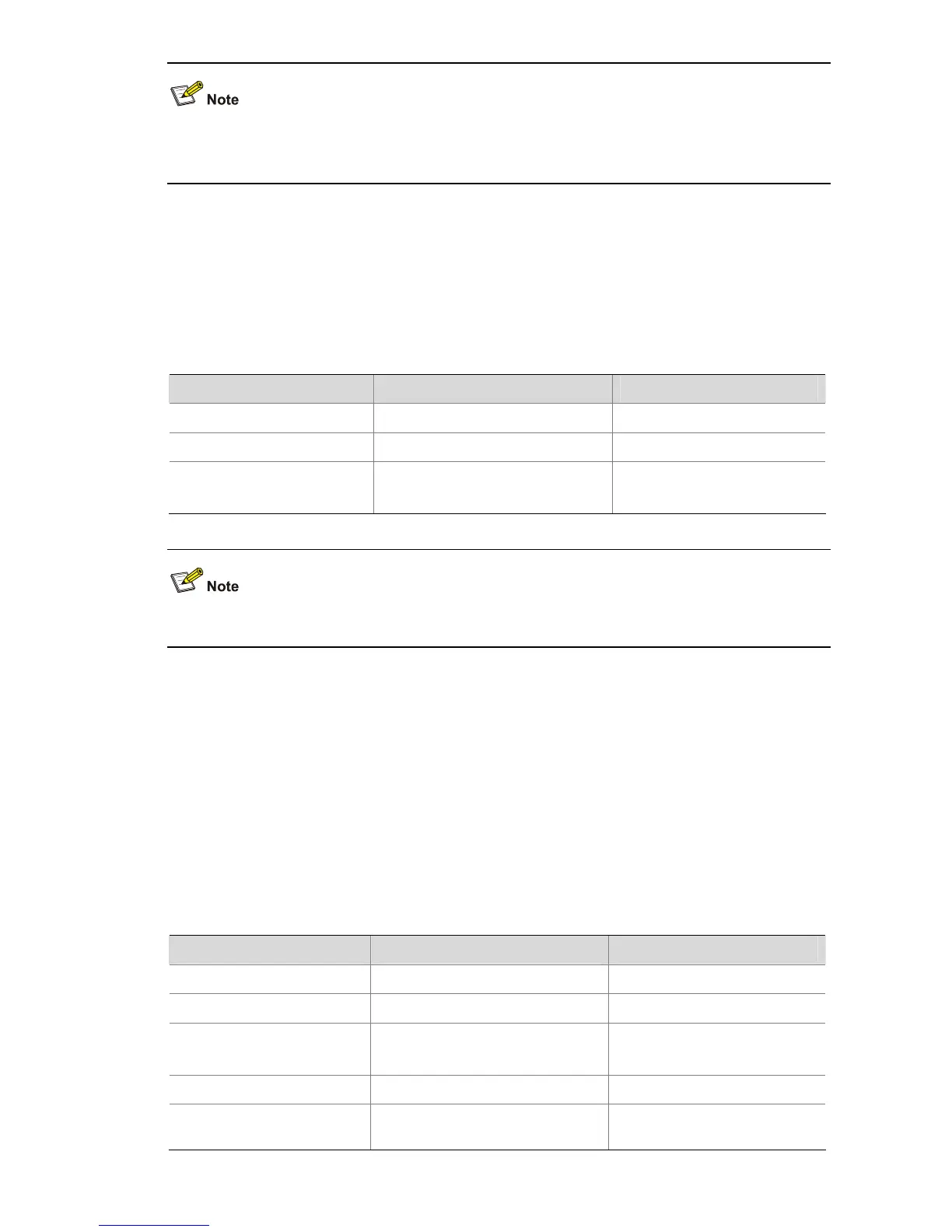3-9
You need to disable RIPv2 route automatic summarization before advertising a summary route on an
interface.
Disabling Host Route Reception
Sometimes a router may receive from the same network many host routes, which are not helpful for
routing and consume a large amount of network resources. In this case, you can disable RIP from
receiving host routes to save network resources.
Follow these steps to disable RIP from receiving host routes:
To do… Use the command… Remarks
Enter system view system-view —
Enter RIP view rip [ process-id ] —
Disable RIP from receiving
host routes
undo host-route
Required
Enabled by default
RIPv2 can be disabled from receiving host routes, but RIPv1 cannot.
Advertising a Default Route
You can configure RIP to advertise a default route with a specified metric to RIP neighbors.
z In RIP view, you can configure all the interfaces of the RIP process to advertise a default route; in
interface view, you can configure a RIP interface of the RIP process to advertise a default route.
The latter takes precedence over the former on the interface.
z If a RIP process is enabled to advertise a default route, to disable an interface of the RIP process
from default route advertisement, you can use the rip default-route no-originate command on
the interface.
Follow these steps to configure RIP to advertise a default route:
To do… Use the command… Remarks
Enter system view system-view ––
Enter RIP view rip [ process-id ] ––
Enable RIP to advertise a
default route
default-route { only | originate }
[ cost cost ]
Optional
Not enabled by default
Return to system view quit ––
Enter interface view
interface interface-type
interface-number
––
